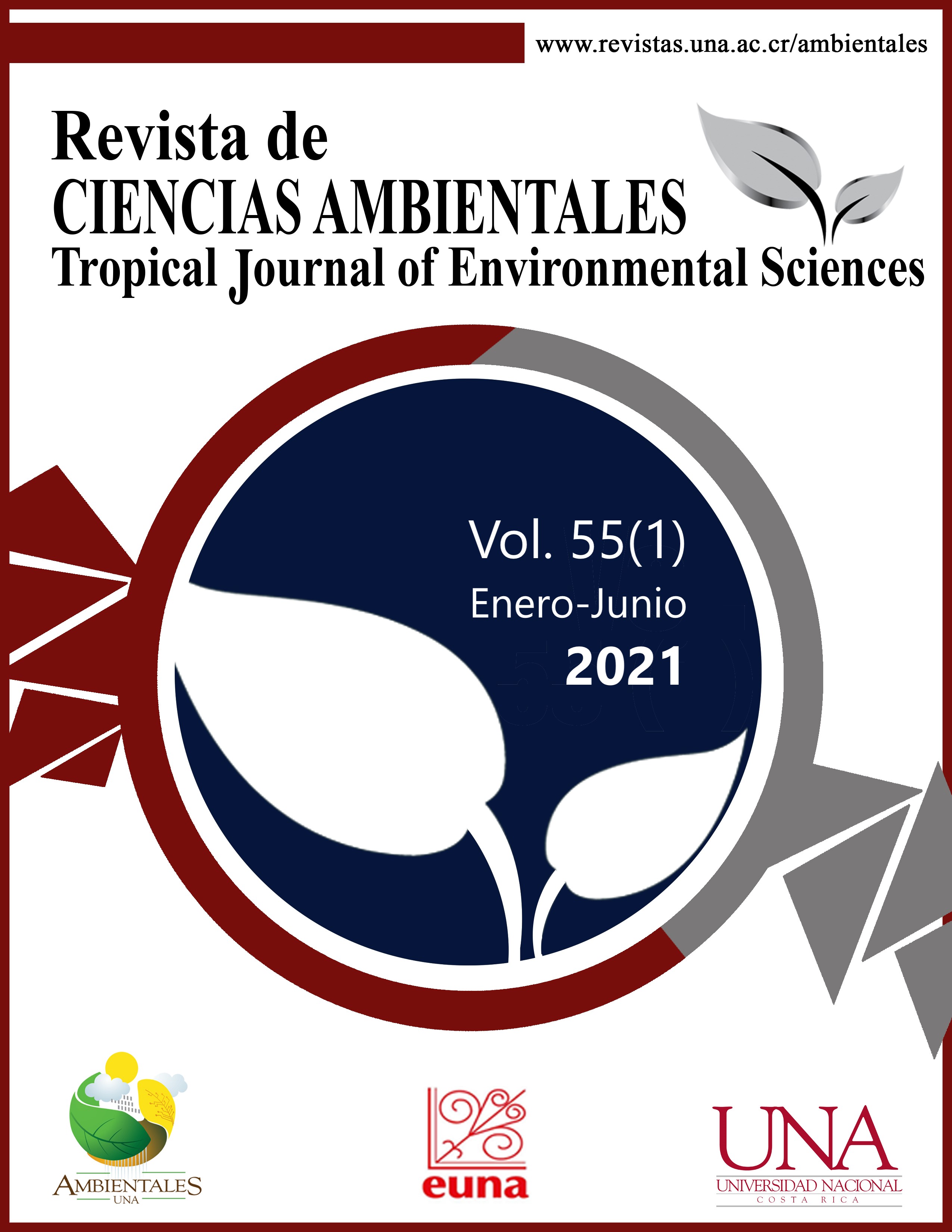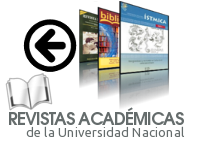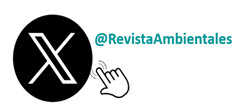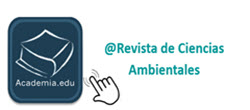Comparative analysis of erosion susceptibility and an uncertainty evaluation at the sub-basin of the Claro River, Costa Rica
DOI:
https://doi.org/10.15359/rca.55-1.13Keywords:
Artificial neural networks; cattle ranching; logistic regression; remote sensing; subbasinAbstract
[Introduction]: Deforestation and unsustainable management of agricultural and livestock production systems in mountainous areas have caused land degradation and a progressive reduction in the provision of ecosystem services. [Objective]: This paper elaborates erosion susceptibility mapping applied at the local scale in the Claro river subbasin in the Fila Cruces mountain range, in Southern Pacific Costa Rica. [Methodology]: The spatial analysis was conducted using a geographic information system (GIS) employing two techniques, logistic regression and artificial neural networks, as well as remote sensing tools. Five conditional factors were finally evaluated for the models: land use, geomorphology, slope gradient, distance to streams, and the Normalized Difference Vegetation Index (NDVI). The erosion susceptibility maps were validated through the receiver operating characteristics (ROC) function. [Results]: The artificial neural network model showed higher predictive power than the logistic regression method based on the calculated value of the Area under the Curve (AUC). The factors with the greatest explanatory power varied depending on the model used. [Conclusions]: The erosion susceptibility maps showed a high ecological alteration in terms of the probability of occurrence of erosion processes, especially in the upper subbasin, lands mostly occupied by cattle ranching, and a steeply sloped morphology.
References
Akaike, H. (1973). Information Theory as an Extension of the Maximum Likelihood principle. In N. Petrov y F. Csaki (Eds.), Second International Symposium on Information theory (pp. 267-81). Akademiai Kiado.
Ayalew, L. y Yamagishi, H. (2005). The application of GIS-based logistic regression for landslide susceptibility mapping in the Kakuda-Yahiko Mountains, Central Japan. Geomorphology, 65, 15–31. https://doi.org/10.1016/j.geomorph.2004.06.010
Bailey, T. M. (2015). Convergence of Rprop and variants. Neurocomputing, 159, 90-95. https://doi.org/10.1016/j.neucom.2015.02.016
Bayard, B., Curtis, M. J. y Shannon, D. (2006). The Adoption and Management of Soil Conservation Practices in Haiti: The Case of Rock Walls. Agricultural Economics Review, 2, 28-39. http://doi.org/10.22004/ag.econ.44111
Beck, M. W. (2018). NeuralNetTools: Visualization and Analysis Tools for Neural Networks. Journal of Statistical Software, 85, 11, 1-20. http://doi.org/10.18637/jss.v085.i11
Brown, E. M., Pinzón, J. E. Didan, K., Morisette, J. T. y Tucker, C. J. (2006). Evaluation of the Consistency of Long-Term NDVI Time Series Derived From AVHRR, SPOT-Vegetation, SeaWiFS, MODIS, and Landsat ETM+ Sensors. IEEE Transactions on Geoscience and Remote Sensing, 44(7), 1787-1793. https://doi.org/10.1109/TGRS.2005.860205
Bruijnzeel, L. A. (2004). Hydrological functions of tropical forests: not seeing the soil for the trees? Agriculture, Ecosystems and the Environment, 104, 185-228. https://doi.org/10.1016/j.agee.2004.01.015
Chandler, G., Markham, B. L. y Helder, D. L. (2009). Summary of current radiometric calibration coefficients for Landsat MSS, TM, ETM+, and EO-1 ALI sensors. Remote Sensing of Environment, 113, 893-903. https://doi.org/10.1016/j.rse.2009.01.007
Chen, W., Xie, X., Peng, J., Wang, J., Duan, Z. y Hong, H. (2017) GIS-based landslide susceptibility modelling: a comparative assessment of kernel logistic regression, Naïve-Bayes tree, and alternating decision tree models, Geomatics, Natural Hazards and Risk, 8(2), 950-973. https://doi.org/10.1080/19475705.2017.1289250
Choi, J., Oh, H. J., Won, J. S., y Lee, S. (2010). Validation of artificial neural network model for landslide susceptibility mapping. Environmental Earth Sciences, 60, 473-483. https://doi.org/10.1007/s12665-009-0188-0
Chung C.J. y Fabbri A. G. (1993). The representation of geoscience information for data integration. Non-renewable Resources, 2, 122–139. https://doi.org/10.1007/BF02272809
Cohen, J. (1960). A coefficient of agreement for nominal scales. Educational and Psychological Measurement, 20(1), 37-46. https://doi.org/10.1177/001316446002000104
Congalton, R. G. (1991). A Review of Assessing the Accuracy of Classifications of Remotely Sensed Data. Remote Sensing of Environment, 37, 35-46. https://doi.org/10.1016/0034-4257(91)90048-B
Cortés, J. (1990). The coral reefs of Golfo Dulce, Costa Rica. Distribution and community Structure. National Museum of Natural History. Smithsonian Institution. Atoll Research Bulletin, 344.
Dai, F. C., Lee, C. F., Li, J. y Xu, Z. W. (2001). Assessment of landslide susceptibility on the natural terrain of Lantau Island, Hong Kong. Environmental Geology, 40, 381–391. https://doi.org/10.1007/s002540000163
Dou, J., Paudel, U., Oguchi, T., Uchiyama, S. y Hayakawa, Y. S. (2015). Shallow and Deep-Seated Landslide Differentiation Using Support Vector Machines: A Case Study of the Chuetsu Area, Japan. Terrestrial Atmospheric and Oceanic Sciences, 26(2), 227-239. http://doi.org/10.3319/TAO.2014.12.02.07(EOSI)
Fritsch, S. y Günther, F. (2008). Neuralnet: Training of Neural Networks. R Foundation for Statistical Computing. https://doi.org/10.32614/RJ-2010-006
Funtowicz, S. O. y Ravetz, J. R. (1990). Uncertainty and Quality in Science for Policy. Kluwer Academic Publishers. https://doi.org/10.1007/978-94-009-0621-1_3
https://doi.org/10.1007/978-94-009-0621-1
Garson, G. D. (1991). Interpreting Neural Network Connection Weights. Artificial Intelligence Expert, 6(4), 46–51.
Gómez-Ossa, L. F., y Botero-Fernández, V. (2017). Desempeño de redes neuronales artificiales en la modelación de la deforestación en una región tropical de Colombia. En J-F. Mas (Comp.), Análisis y modelación de patrones y procesos de cambio. Centro de Investigaciones en Geografía Ambiental, UNAM.
Günther, F. y Fritsch, S. (2010). Neuralnet: Training of Neural Networks. The R Journal, 2(1). https://doi.org/10.32614/RJ-2010-006
Guzzetti, F., Carrara, A., Cardinali, M. y Reichenbach, P. (1999). Landslide hazard evaluation: a review of current techniques and their application in a multi-scale study, Central Italy. Geomorphology, 31, 181–216. https://doi.org/10.1016/S0169-555X(99)00078-1
Hamel, P. y Bryant, B. P. (2017). Uncertainty assessment in ecosystem services analyses: Seven challenges and practical responses. Ecosystem Services, 24, 1–15. http://doi.org/10.1016/ j.ecoser.2016.12.008
Kalantar, B., Pradhan, B., Naghibi, S.A., Alireza Motevalli, A. y Mansor, S. (2018). Assessment of the effects of training data selection on the landslide susceptibility mapping: a comparison between support vector machine (SVM), logistic regression (LR) and artificial neural networks (ANN), Geomatics, Natural Hazards and Risk, 9(1), 49-69. http://doi.org/10.1080/19475705.2017.1407368
Landis, J. y Koch, G. (1977). The measurement of observer agreement for categorical data. Biometrics, 33, 159-74. https://doi.org/10.2307/2529310
Lee, S., Jeon, S. W., Kwan-Young, O. y Moung-Jin, L. (2016). The spatial prediction of landslide susceptibility applying artificial neural network and logistic regression models: A case study of Inje, Korea. Open Geosciences, 8(1), 117-132. https://doi.org/10.1515/geo-2016-0010
Liu, C. R., Frazier, P. y Kumar, L. (2007). Comparative assessment of the measures of thematic classification accuracy. Remote Sensing of Environment, 107, 606–616. https://doi.org/10.1016/j.rse.2006.10.010
Mende, A. y Astorga, A. (2007). Incorporating geology and geomorphology in land management decisions in developing countries: A case study in Southern Costa Rica. Geomorphology 87, 68–89. https://doi.org/10.1016/j.geomorph.2006.06.043
MINAE-CENIGA. (1998). Información cartográfica de la misión TERRA-Costa Rica. Ministerio de Ambiente, Energía y Minas.
Nefeslioglu, H. A., Gokceoglu, C., y Sonmez, H. (2008). An assessment on the use of logistic regression and artificial neural networks with different sampling strategies for the preparation of landslide susceptibility maps. Engineering Geology, 97, 171–191. http://doi.org/10.1016/j.enggeo.2008.01.004
Ngadisih, Bhandary, N. P., Yatabe, R. y Dahal, R. K. (2016). Logistic regression and artificial neural network models for mapping of regional-scale landslide susceptibility in volcanic mountains of West Java (Indonesia). American Institute of Physics Conference Proceedings, 1730, 060001-1–060001-11. http://doi.org/10.1063/1.4947407
Pontius, R. G., Jr. (2000). Quantification error versus location error in the comparison of categorical maps. Photogrammetric Engineering and Remote Sensing, 66, 1011–1016.
Pontius, R. G., Jr. y Schneider, L. C. (2001). Land-cover change model validation by an ROC method for the Ipswich watershed, Massachusetts, USA. Agriculture, Ecosystems and Environment, 85, 239–248. http://doi.org/10.1016/S0167-8809(01)00187-6
Pradhan, B. (2013). A comparative study on the predictive ability of the decision tree, support vector machine and neuro-fuzzy models in landslide susceptibility mapping using GIS. Computers & Geosciences, 51, 350-365. https://doi.org/10.1016/j.cageo.2012.08.023
Pradhan, B., y Lee, S. (2010). Regional landslide susceptibility analysis using backpropagation neural network model at Cameron Highland, Malaysia. Landslides, 7(1), 13-30. https://doi.org/10.1007/s10346-009-0183-2
ProDUS. (2007). Diagnóstico. Plan regulador cantonal de Golfito (Tomo I). Escuela de Ingeniería Civil. Universidad de Costa Rica.
Proyecto CARTA. (2005). Centro Nacional de Alta Tecnología. Consejo Nacional de Rectores (CONARE).
R Core Team. (2017). R: A Language and Environment for Statistical Computing. R Foundation for Statistical Computing. URL https://www.R-project.org/
Refsgaard, J. C., van der Sluijs, J. P., Højberg, A. L. y Vanrolleghem, P. A. (2007) Uncertainty in the environmental modelling process––a framework and guidance. Environmental Modelling and Software, 22, 1543–1556. http://dx.doi.org/10.1016/j.envsoft.2007.02.004.
Schwarz. G. (1978). Estimating the dimension of a model. Annals of Statistics, 6, 461–464. https://doi.org/10.1214/aos/1176344136
Steinfeld, H. (2002). Producción animal y el medio ambiente en Centroamérica. . En Intensificación de la ganadería en Centroamérica. Beneficios económicos y ambientales (Cap. I. Ganadería y medio ambiente en Centroamérica. FAO.
Swets, J. A. (1988) Measuring the accuracy of diagnostic systems. Science, 240, 1285–1293. https://doi.org/10.1126/science.3287615
Szott, L., Ibrahim, M. y Beer, J. (2000). The hamburger connection hangover: cattle pasture land degradation and alternative land use in Central America. Serie Técnica. Informe Técnico n.o 313. CATIE.
Van Westen, C. J., Rengers, N. y Soeters, R. (2003). Use of Geomorphological Information in Indirect Landslide Susceptibility Assessment. Natural Hazards, 30, 399–419. https://doi.org/10.1023/B:NHAZ.0000007097.42735.9e
Weber, K. T., Théau, J., y Serr, K. (2008). Effect of coregistration error on patchy target detection using high-resolution imagery. Remote Sensing of Environment, 112, 845–850. https://doi.org/10.1016/j.rse.2007.06.016
Downloads
Published
How to Cite
Issue
Section
License

This work is licensed under a Creative Commons Attribution-NonCommercial-ShareAlike 4.0 International License.



















